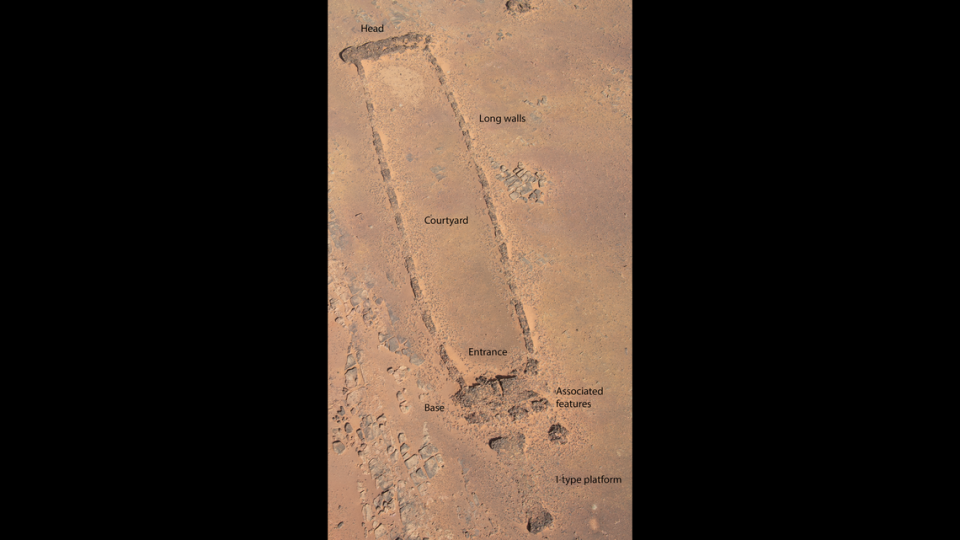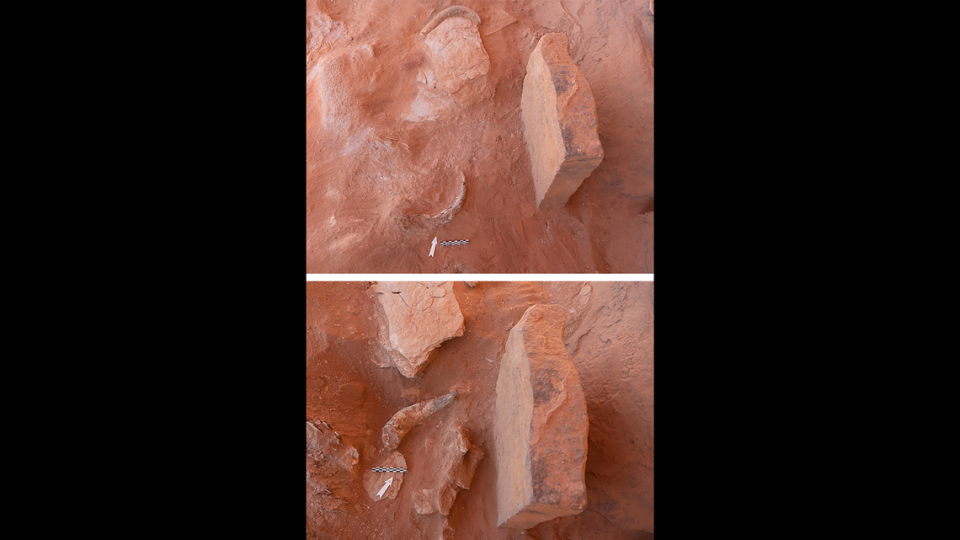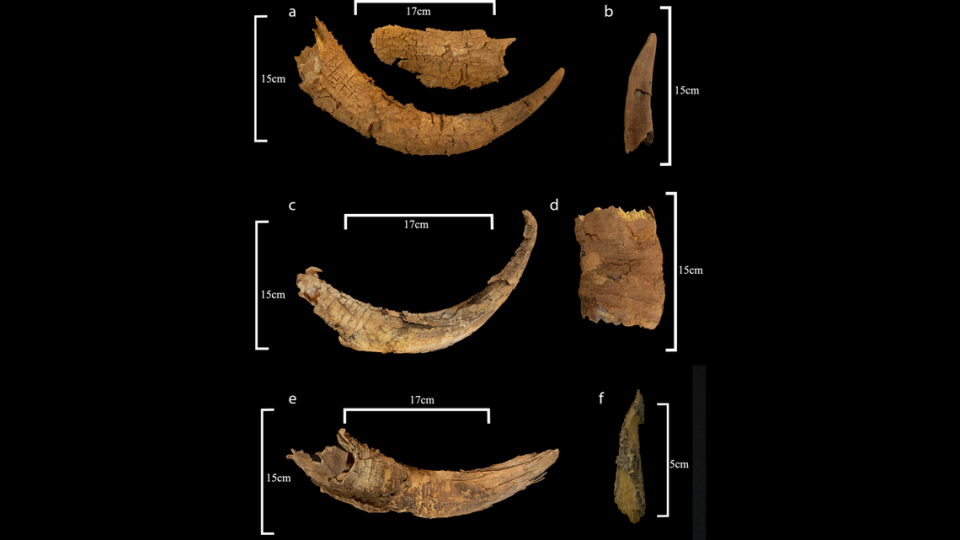Unearthed desert chamber held remains of 7,000-year-old rituals from ancient Arabia
Hidden deep in the northern Arabian desert within a valley of large rocks is a 460-foot-long rectangular monument.
Dating to the Neolithic era, the sandstone structure — known as a mustatil — is composed of “two thick ends” connected by long walls, according to a tweet from the Prehistoric AlUla and Khaybar Excavation Project (PAKEP).

For the last five years, archaeologists from the University of Western Australia have worked to excavate the approximately 7,000-year-old monument, according to a March 16 news release from the university. Now, they’re sharing their groundbreaking findings.
Here’s what they found.
Evidence of ritualistic activity
At the head of the monument, archaeologists discovered a blocked-off, “decommissioned” chamber built around three vertical stones, PAKEP said in a tweet. The stones are “betyls” — which are focal points for dedications to deities.

Most of the unearthed artifacts in the chamber were centered around the largest, center beytl, the archaeologists said.
Experts said their finds indicate that cattle, goats and gazelles were taken to the site where they were slaughtered and then given over to the stone dedications. Of the animal remains, archaeologists said they mostly found horns, noting that only the upper portions of the animal skulls were given as offerings.
Despite their age, the horns were well-preserved, and they came mostly from male cattle between the ages of 2 and 12, according to the team. This is important, because it indicates that Neolithic populations were sacrificing “high value animals.”

“The predominance of cattle suggests that the region had enough vegetation and water to sustain herding,” Melissa Kennedy, who works for the university’s School of Humanities, said in the school’s release. “It suggests that our understanding of the Neolithic period in the Arabian Peninsula needs further revision.”
The sacrificial remains also indicated more complex human interactions than originally thought, especially because there are 1,600 similar monuments across the region, Kennedy said.
A question we are regularly asked is “How do you know mustatil are ritual structures?” Well our new paper is out! This paper explores our excavation results of a mustatil. The paper is #OpenAccess (free) and can be read here (https://t.co/6e0hBwE9ix). Read on for results 1/ pic.twitter.com/M8gwsyrZmu
— PAKEP (@PAKEP_KSA) March 16, 2023
“Collectively, what we’ve seen across all these monuments is the suggestion that a large part of northern Arabia was marked by a similar cultic belief and ritual construction, as well as pilgrimage activity – a more connected landscape than was usual for this period,” she said.
Ancient human remains
Evidence at the site indicates that the mustatil went out of use sometimes between 4900 B.C. and 4800 B.C., the archaeologists said. But that wasn’t the end of the areas’ use.
A few hundred years later, the site was “reused,” PAKEP said.

Next to the monument, archaeologists found a human grave holding five vertebrae, half of a left foot and several other bones, they said in a study published in PLOS One on March 15. The remains appear to belong to a 30- to 40-year-old male, but there was no clear cause of death.
AlUla, also known as Al’Ula, is in the northwest region of Saudi Arabia.
40,000-year-old cave full of animal skulls might be first known site of human rituals
‘Fantastic discovery’ leads archaeologist to 11,000-year-old human remains in Britain
What did people eat 9,000 years ago? Hunting cave reveals glimpses of diets in Mexico

